Abbey and Altenmünster of Lorsch
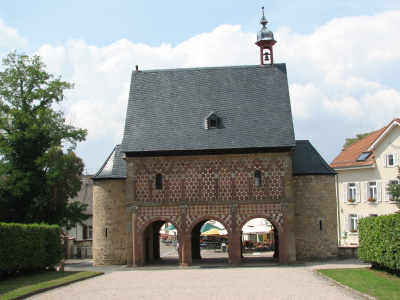
The Abbey and Altenmünster of Lorsch are rare surviving monuments of the era of Charlemagne.
The Abbey, its gatehouse and the Altenmünster date from about 764 CE. Its “Königshalle” became the burial place for the Carolingian kings of the Eastern part of the Frankish Realm. The monastery also holds sculptures and paintings from the Carolingian era.
Community Perspective: The Königshalle (better known as Torhalle: gatehouse) is its most notable monument as it has been preserved above ground in the best condition. Hubert has described it well. After 2014, the surrounding landscape has been turned into a garden so there are no obstructing views.
Air and Téneré
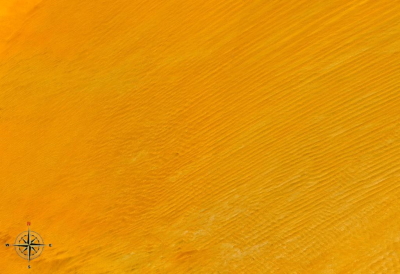
The Air and Ténéré Natural Reserves comprises a large protected area that includes the Saharan desert of Ténéré and the volcanic massif of the Aïr Mountains, a Sahelian ‘island’ within the desert.
The landscape with its blue marble mountains and sand dunes is of outstanding beauty. Due to its isolation, numerous Saharo-Sahelion wildlife species that are rare elsewhere have managed to survive in the Aïr. One-sixth of the reserve is a sanctuary for Addax, a critically endangered species of antelope.
Community Perspective: This site is rarely visited due to the safety situation and remote location.
Ayutthaya

The Historic City of Ayutthaya covers the remains of the second Siamese capital, where true Thai art developed.
Ayuthaya was one of the most important trading and diplomatic centers in the region. It had a rigid urban plan and a hydraulic water management system. As the site was mostly razed to the ground in 1767, all that remains are ruins of towers and Buddhist monasteries. They are known for their eclectic architecture and decoration with wall paintings.
Community Perspective: “The challenge posed by this site is to make sense out of the scattered remains”. Wat Phra Sisanphet and Wat Matathat are among its highlights.
Borobudur
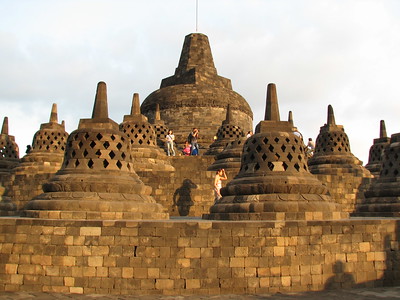
The Borobudur Temple Compounds is a Buddhist archaeological site that is considered a masterpiece of Buddhist art and architecture.
The main, single large stupa was built on ten superimposing terraces around a natural hill. It is decorated with reliefs. The platforms hold smaller stupas with a statue of the Buddha. Two smaller Buddhist temples, Pawan and Mendut, complete the representation of phases in the attainment of Nirvana.
Community Perspective: go there for the quality of its reliefs, its size is not as gigantic as you may have imagined it. A sunrise visit comes recommended.
Danube Delta
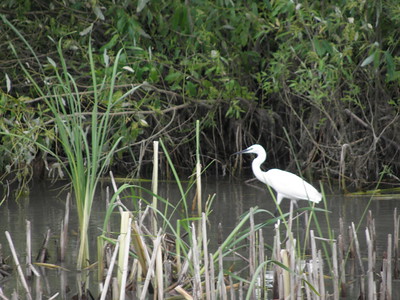
The Danube Delta is the largest continuous marshland in Europe and a critical site for bird conservation.
The Delta is on the flyway between central and eastern Europe and the Mediterranean and Middle East and Africa. It is also the major site for two threatened species, the pygmy cormorant and the red-breasted goose. The area consists of a low alluvial plain, mostly covered by wetlands and water, with an intricate pattern of marshes, channels, and lakes.
Community Perspective: to enjoy its OUV, it’s best to take a boat into the interior where the villages are not accessible by road. This can be easily organised from Tulcea. April-May is the best for birds; Clyde has provided birdwatching tips for this site.
Drottningholm
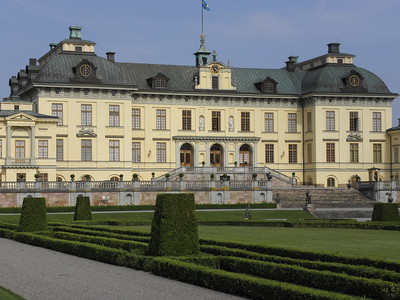
The Royal Domain of Drottningholm is an 18th-century European royal residence influenced by Versailles.
The French/English gardens and Italian/French-influenced buildings are located on an island. In addition to the Palace, they also include the Palace Theatre, the Chinese Pavilion, Canton Village, the gardens and part of Malmen. Drottningholm Palace is the current home of the Swedish Royal Family.
Community Perspective: This is an easy half-day trip from Stockholm. The Chinese Pavillion and the Theatre stand out the most among the buildings. Frederik even did get to meet the Swedish Queen!
Fortress of Suomenlinna
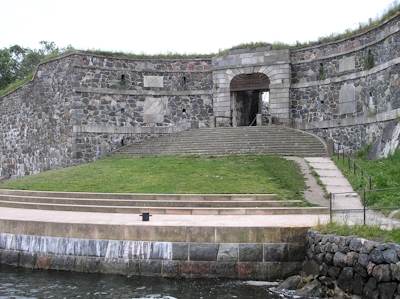
The Fortress of Suomenlinna comprises military fortifications built on six islands to guard the entrance to Helsinki's harbour.
Suomenlinna was originally built in 1748 to withstand the Russians at a time when Finland was part of Sweden. It was designed by the Swedish Admiral Eherensvärd, who adapted Vauban’s theories to this specific terrain and built a fortress from local rock, fortified with a system of bastions. The Russians however managed to take over the fortress in 1808 and added their own constructions. Finally, in 1918 the Fortress became Finnish and in 1973 it ceased to have a military purpose.
Community Perspective: easily reached by a short ferry ride from Helsinki, nowadays Suomenlinna mostly means a relaxed day out for city dwellers. As people still live on the islands, it is not too open-air museum-ish.
Island of Mozambique
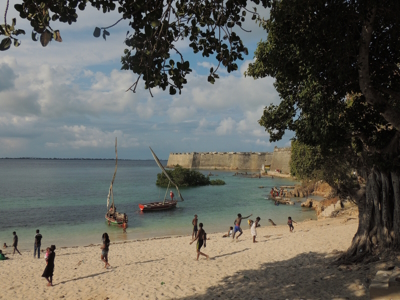
The Island of Mozambique was a trading post on the maritime route to India.
The towns on this Indian Ocean island show a mix of Arab, Indian and European influences, while also traditional African architecture has been preserved. Arab traders had settled here from the 10th century onwards, the Portuguese established a port and naval base as early as 1507 and left fortresses and churches. The site also comprises the neighbouring Sao Lorenco Island.
Community Perspective: “Natural beauty and incomprehensible squalor coexist side-by-side on this tiny island.” However, all reviewers seem to have enjoyed their stay and recommend visiting the fortress, the church, the governor’s palace and the neoclassical hospital.
Komodo National Park
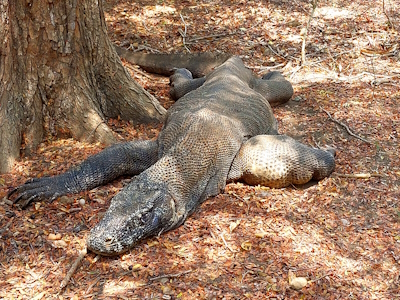
Komodo National Park was founded in order to protect the main habitat of the world’s largest lizards, the "Komodo dragons".
The park includes the three larger islands Komodo, Rinca and Padar, as well as numerous smaller ones. They are of volcanic origin and are mostly covered by open grass-woodland savannah. The Komodo Lizard that has found its last refuge in these areas can grow to 3m in length. The marine areas surrounding the islands are rich in coral and marine mammal species.
Community Perspective: the lesson here seems to be to not shortchange yourself on time on the islands – see Alexander’s review for some horror stories. Clyde spent 4 nights in the area, did rewarding treks on both Rinca and Komodo Island and was awestruck by the marine life and marine environment. Svein recommends the two-day “slow cruise” from Labuan Bajo.
Morelia
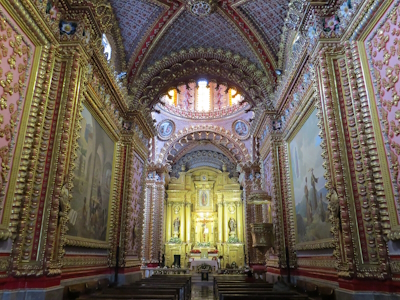
The Historic Centre of Morelia comprises a Spanish-Mesoamerican urban townscape from the 17th and 18th centuries.
The centre contains over 200 historical buildings, all made out of characteristic pink stone and with many Baroque facades and azulejo cupolas. During the colonial period, a number of religious orders established themselves in the city and it was the birthplace of important personalities of independent Mexico, allowing it to take an important place in the history of art and culture in the country.
Community Perspective: A very Spanish-looking city, with the Aqueduct and the Santuario de Guadalupe as its highlights.
Old Rauma
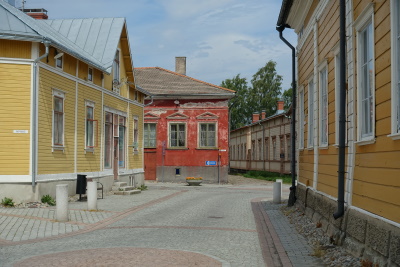
Old Rauma is an outstanding example of traditional Nordic wooden town architecture.
The irregular town plan dates from the Middle Ages, while the commercial and residential buildings are from the 18th and 19th centuries. Rauma developed as a port city, although the coastline is now some 1.5km away due to land uplift. Landmarks at the Market Square include the medieval church and former Town Hall.
Community Perspective: Delightful town to visit, touristy but not too much. There are several homes that have been converted into museums and many lace shops.
Paris, Banks of the Seine
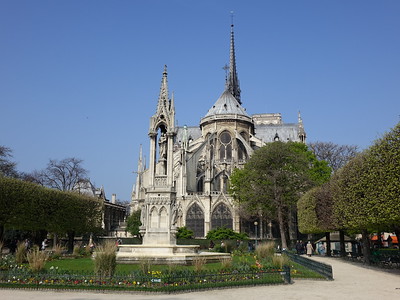
Paris, Banks of the Seine, comprises many of the main treasures of the French capital from the Middle Ages to the 20th century.
The area stretches from Saint-Chapelle and Notre Dame Cathedral in the east to the Eiffel Tower in the west. Along this kilometers-long route, one can find monuments such as the Notre Dame, Saint-Chapelle, the Louvre, the Gare d'Orsay and the Place de la Concorde. It also shows Haussmann’s urban planning, which inspired the construction of the great cities in Latin America.
Community Perspective: All these monuments are tempting of course (Hubert has provided an overview), but it is already worthwhile to take a boat trip or walk the whole included stretch along the Banks of the Seine. Be aware that a relatively small part of Paris is covered by the core zone of this WHS. And it’s not all rosy either: there are crowds and Parisian rudeness, and Ian hates the lanes of heavy traffic that cross the area.
Poblet Monastery
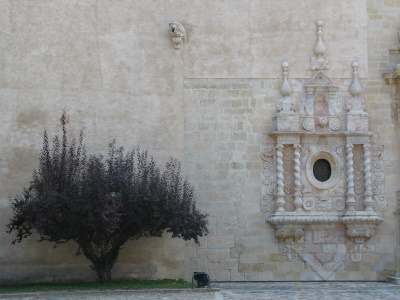
Poblet Monastery is one of the largest and most complete Cistercian abbeys in the world.
The building from the 12th to 14th centuries also is a massive military complex and has served as a royal palace, residence, and the pantheon of the Kings and Queens of Catalonia and Aragon. Some of the most important royal sepulchres have alabaster statues that lie over the tomb and the Abbey has a noteworthy alabaster altarpiece by Damià Forment.
Community Perspective: The monastery has a picturesque location. Clyde recommends hiking the Espluga de Francoli loop trail around the monastery walls (ca. 1h), while Hubert has described the many highlights of the interior. Visitor instructions are a bit "Spanish" - you'll have to join a guided tour or at least adhere to their timings (see Ilya's review of how that works out for a non-Spanish speaker), although in Nov 2023 it seems from the official website that the tour now is carried out via an app.
Prambanan
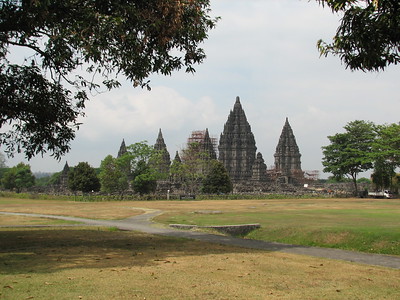
Prambanan Temple Compounds comprise the remains of large ancient Buddhist and Hindu temple complexes.
The complex contains over 500 temples, characterised by their tall and pointed architecture. The main ones are Prambanan Temple, a 47m high central building dedicated to Shiva inside a large complex of individual Hindu temples, and Sewu Temple, Indonesia’s largest Buddhist complex. The temples are decorated with stone-carved reliefs.
Community Perspective: often crowded, so visit early in the morning or in the late afternoon. Expect to see a lot of rubble as the consequence of several disasters (as recent as an earthquake in 2006), but recent restoration works have helped at least conserve what is still standing.
Rangiri Dambulla Cave Temple
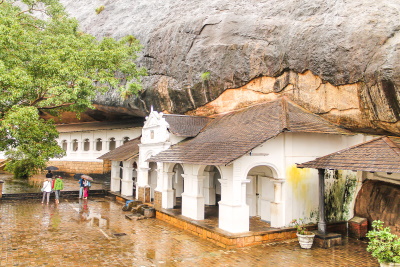
The Rangiri Dambulla Cave Temple is an important Buddhist shrine and monastery.
Dambulla has been a sacred place since the 3rd century BCE and is an active site of pilgrimage. The temple consists of five separate caves that were hewn from a big rock. On the inside, the caves are decorated with well-preserved paintings and statues from the 15th-18th centuries.
Community Perspective: It takes a lot of stairs to climb and not to be distracted by the lingering monkeys or the shiny new temple that has been built next to it. The vivid color of its statues and mural paintings stand out.
Reims
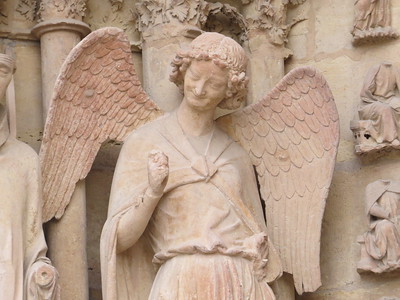
The Cathedral of Notre-Dame, Former Abbey of Saint-Remi and Palace of Tau, Reims are renowned for their Gothic art and direct links to the history of the French monarchy.
The cathedral is one of the great French Gothic cathedrals of the 13th century and is known for its sculptured ornamentation. The Palace of Tau played an important role in the coronation ceremony of the French monarchy, as did the Former Abbey of Saint-Remi. It also was at Saint-Remi that Clovis, King of the Franks, was christened.
Community Perspective: The cathedral seems to be undergoing perpetual restoration, but it has to be visited for its striking sculptures and stained glass windows by Marc Chagall. Saint-Remi also is a fine church.
Serra da Capivara
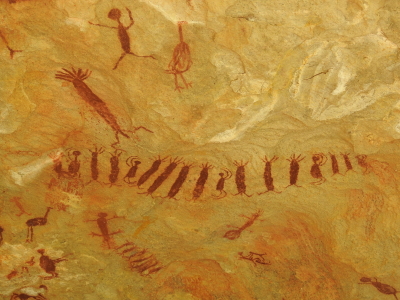
Serra da Capivara National Park holds many rock shelters in which the oldest rock art of the Americas has been found.
The art and associated archeological sites reveal aspects of the religious beliefs and practices of one of the oldest populations to inhabit South America. The earliest traces of rock painting here may date from 25,000 BP, while most of the painted works are from 10,000 to 4,000 BCE. They were made by Nordeste and Agreste cultures.
Community Perspective: all reviewers so far loved it, and you can easily spend 2-3 days here. The Caatinga landscape of the park, typical of this semi-arid region, is an additional bonus. Be aware that you need a local guide to enter: some contacts can be found in the reviews of Wojciech and Els, or you could ask at your lodgings the night before your visit.
Shark Bay

Shark Bay, Western Australia, covers a large, mostly marine area that is renowned for its presence of stromatolites and the largest seagrass bank in the world.
Its marine waters are hypersaline. Hamelin Pool has the most diverse and abundant examples of stromatolites in the world, while the Wooramel Seagrass Bank has the most seagrass species recorded from one area. The site is also of major zoological importance being home to about 11,000 dugongs and many dolphins and whales.
Community Perspective: According to Zoë, it’s not an easy site to come to grips with, unless you are satisfied with seeing dolphins at Monkey Mia.
Sucre
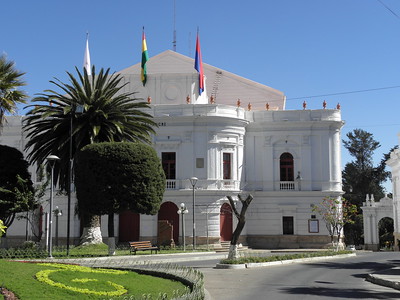
The Historic City of Sucre is a well-preserved colonial urban landscape that shows the blending of European and local architectural styles.
Sucre became a cultural center, the seat of an archbishopric and the seat of the Supreme Court that reigned over large parts of South America. For much of its colonial history, Sucre's temperate climate was preferred by the wealthy Spanish involved in the silver trade coming from Potosí. Its typical Spanish-colonial checkerboard street pattern is still intact, as are the religious and public buildings from the 16th-19th centuries.
Community Perspective: An attractive, relaxed city and with a climate comparable to a British colonial hill-town, Sucre is considered a good place to spend a few nights. It can be hard though to find anything open (especially the churches). The Casa de Libertad is a must-do, and good city views are to be had from the roofs of the San Felipe Neri church and La Recoleta. Furthermore, Timonator recommends a Free Walking Tour and the indigenous textile museum, Nan the Gutierrez Museum.
Sukhothai
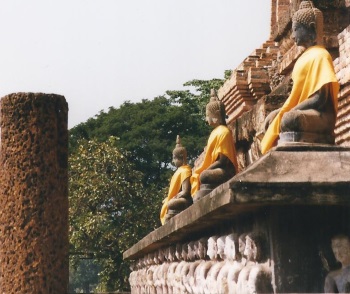
The Historic Town of Sukhothai and Associated Historic Towns consist of remains of the first Kingdom of Siam.
Sukhothai was the political and administrative capital, Si Satchanalai was the spiritual center and Kamphaeng Phet had a military function. Together they illustrate the beginnings of the Thai state and its architecture. Most notable among the ruins are the Buddhist monasteries and temples, with a distinct style of decoration.
Community Perspective: Nowadays this is a “historical park with many temple ruins and pretty lily ponds”. Frederik has described the ‘secondary’ locations of Si Satchanalai and Kamphaeng Phet. The site can be visited as a day trip by plane from Bangkok due to the timing of domestic flights.
Thungyai-Huai Kha Khaeng
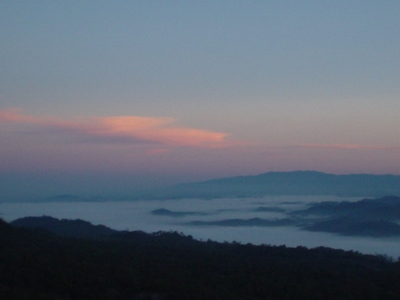
The Thungyai and Huai Kha Khaeng Wildlife Sanctuaries hold an unusual mix of species from four different biogeographic zones: Sundaic, Indo-Chinese, Indo-Burmese and Sino-Himalayan.
These two contiguous parks are located in the northwest of Thailand along the Burmese border. Thungyai is predominantly mountainous, with rivers and a central grassland plain. Huai Kha Khaeng is hilly and has five types of forests. The area is large and undisturbed enough to support the survival of elephants and tiger. The presence of mineral licks also is profitable for wildlife.
Community Perspective: a good excuse to visit Western Thailand, although getting into the inner core zone of the protected area is almost impossible and you are not allowed to stay overnight inside the park. Els describes a day visit with a park ranger to Huai Kha Khaeng Wildlife Reserve with good wildlife watching from one of its watchtowers, Solivagant entered the same area and explored it on his own, and Frederik enjoyed the surrounding areas of Tee Lor Su and Hoop Pa Taad Valley.
Ujung Kulon National Park
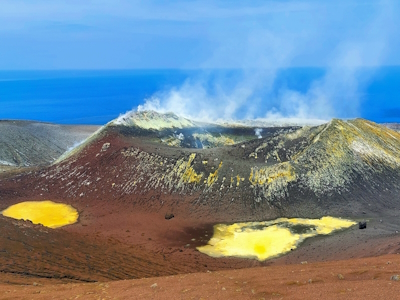
Ujung Kulon National Park contains the largest remaining lowland rainforest in Java, which is the habitat of the critically endangered Javan Rhinoceros.
The park consists of the Ujung Kulon peninsula and several offshore islands, including the volcanic island group of Krakatoa. Krakatoa’s devastating eruption of 1883 has led to ongoing geological activity and is a well-known object of scientific study. The Javan Rhino count is down to about 60 individuals.
Community Perspective: a day trip to Krakatoa seems to be the most popular way to visit as it can be arranged from as far as Jakarta. You can have calm seas (Frederik), but it also can turn into “by far the most dangerous and exhilarating WHS visits so far” (Clyde). Joel visited shortly after Clyde, and now the main cone of Anak Krakatau had collapsed. Frédéric gives a different perspective on this WHS as he visited Handeuleum Island, which wasn’t a walk in the park either.
Extended Sites in 1991
Lima
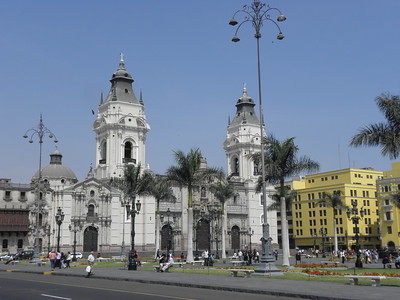
The Historic Centre of Lima has been a leading city in the New World since its foundation in 1535 by Spanish conquistador Francisco Pizarro.
The centre covers both banks of the river Rimac and holds numerous religious and public buildings that date from the 17th and 18th centuries when Lima was the capital of the Viceroyalty of Peru. Its San Francisco de Lima is one of the most complete and outstanding convents of the colonial era.
Community Perspective: Lima gets a lot of mixed reviews: “There are colonial remnants if you look for them”, but it “lacks a truly iconic building, monument or landmark”.
Solivagant UK - 01-May-05

Is there no one out there prepared to write a (positive?) review of the “Historic Centre of Lima”? Lima has a poor reputation among tourists – I have not even been able to find a “good” photo of my own (from visits in 1973 and 84!) and thus present a rather mediocre one of the Plaza de Armas on a typical grey Lima day – looking very dull in the “garua” mist which covers the city for much of the year.
But, if you visit Peru (Which is a wonderful destination - it is perhaps my favourite country for its “variety” of sights - historic, ethnic, scenic (mountains, desert, and jungle) and wildlife) you will have to come to terms with Lima as the port of entry, the transport hub and home for a third of Peru’s population.
Read OnPotsdam
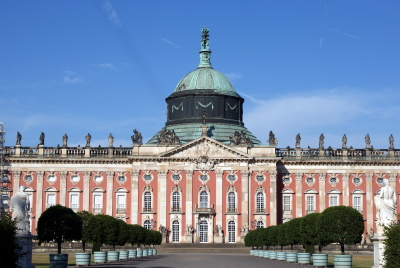
The Palaces and Parks of Potsdam and Berlin comprise an eclectic ensemble of architectural and landscaping masterpieces.
Potsdam was the residence of the Prussian kings until 1918; its majestic buildings were built mainly during the reign of Frederick II the Great (1740-1786) and according to designs of Peter Joseph Lenné. He incorporated influences from Italy, England, France, Flanders, Paris and Dresden.
Community Perspective: the Potsdam gardens are good for walking and an easy day trip from Berlin. The Sanssouci Palace is its main attraction, but it cannot be recommended to those with an allergy to “Stately Homes”. We can count on Hubert to perfectly describe a site like this!
Assif Germany - 01-May-05
I visited Potsdam twice in the summers of 2006 and 2007 and was surprised by how much reconstruction had been carried out in the meanwhile. Post-Communist Potsdam is now becoming the beautiful wealthy looking city it used to be before WWII. Except the justifiably most well known of Potsdam's attractions, namely Sans Souci Palace and park, the area is loaded with interesting sites to visit. Don't miss Alexandrowska - the Russian colony errected in the 19th Century for Russian settlers, which is covered by the Unesco title. It offers lovely traditional Russian wooden houses in ornated style. A small museum, though not very interesting for itself, offers you a glimpse into the interior of these traditional houses (www.alexandrowska.de).
Read On